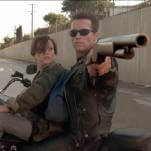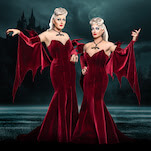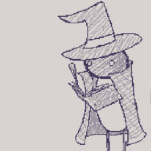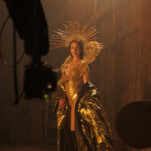Each week, Big Issues focuses on newly released comic books of significance. This week, it’s Midnighter #2. Written by Steve Orlando (Undertow, Vertigo Quarterly CMYK) with art by Alec Morgan (All-New Captain America Special), Romulo Fajardo Jr. (The Omega Men, Wonder Woman ’77), and Pete Pantazis (Bizarro, Earth 2), this issue is a mission statement for the character and title, showing the titular hero as a proudly gay man fighting corruption and bigotry on his personal quest to self-discovery and romantic fulfillment. (Note: This review reveals major plot points.)
Midnighter #2 is a great comic on its own, but it gains extra cultural relevance by coming out less than a week after the Supreme Court’s historic decision to legalize same-sex marriage across the country, marking a major step forward for gay rights in the U.S. As homosexuality is gradually destigmatized and, in many places, decriminalized, diverse representations of gay characters are needed in pop culture to help propel change, making books like Midnighter especially important. The first DC Comic headlined by a gay male superhero, Midnighter is a standout title of the DC You publishing initiative thanks to the character’s unique perspective, painting him as far more than a “gay Batman.”
Bruce Wayne is haunted by his past and protects Gotham City out of a tortured obligation to his dead parents, whereas Midnighter is a man without a memory, engineered to be a killing machine, trying to figure out who he is. Despite a tragic backstory, Midnighter has a surprisingly fun, cheeky personality; he has a sarcastic sense of humor, jumps at the opportunity to offend, and takes immense pleasure in causing pain to people who deserve it. The comparisons to Batman don’t go much further than them both being white men who fight crime in black costumes. Writer Steve Orlando has increased the distance between the two characters in the new Midnighter ongoing series, primarily by devoting ample time to the hero’s romantic relationships.
Midnighter is a rare superhero comic written by an LGBTQ creator (Orlando is openly bisexual) and featuring an LGBTQ character in any sort of leading role. Prioritizing Midnighter’s love life has given the book an emotional core that is surrounded by thrilling superhero action. Each issue has balanced big action sequences with intimate character moments showing Midnighter on dates with different men, and the dynamic between who he is with and without his mask gives the character dimension he hasn’t had since becoming a part of the mainstream DC universe.
Thanks to characters like Omar from The Wire and DC’s own Batwoman, “badass” is becoming a more common adjective for gay characters. Orlando is very aware that a big part of Midnighter’s appeal is the wild action that follows him wherever he goes. This week’s Midnighter #2 jumps between Midnighter fighting a grieving martial arts instructor seeking vengeance for her husband’s death and Midnighter on a date in Moscow, where he encounters homophobic natives that he gladly beats when they express their disgust at his behavior. Both plotlines reveal different aspects of the character, but work together to cement Midnighter’s place as a hero that fights for the underdog: gay, straight, or otherwise.
Marina Lucas lost her husband when Windcrest Foods willingly released a product that the company knew could cause a lethal allergic reaction in consumers. When a mysterious figure gifts her with a supernatural weapon, she takes the fight to the corporation and goes after its board of directors. Armed with the “Six Killing Sounds,” Marina just needs to say one word to bring opponents to their knees, but that’s not going to stop Midnighter, especially after he rips out his ears (don’t worry, he grows new ones). After maiming himself, Midnighter makes his way to the roof of the building, ties a rope to a ventilation pipe, and jumps off, swinging down and around to crash through the window where Marina is intimidating the three heads of Windcrest Foods. It’s an awesome widescreen action moment, and it’s immediately followed by an awesome small-scale action moment when the story jumps to Midnighter and Matt on their date in Moscow.
As exciting as the Midnighter/Marina plot is, the meat of this issue is in the Moscow scenes, which look at how Midnighter’s special abilities give him the courage to stand up against threats like overwhelming social prejudice. A bar in Moscow is far down on the list of places for a gay man to take his date, but Midnighter does it without shame and wears an American flag tank-top to get people even more riled up when they see him. Midnighter isn’t afraid of the consequences, because he knows he can beat pretty much anyone if they start shit, and Matt is totally enchanted by Midnighter’s point of view. “You see the world, and see how we can beat the odds,” Matt says while they eat barbequed shashlik in Izmailovsky Market. “Anyone not amazed by Midnighter, what he means, is the real idiot.”
The key word in Matt’s line is “we,” and as the sole gay hero leading a title at DC or Marvel, Midnighter is the main superhero representative for the entire gay community. He’s a representative who doesn’t accept anybody’s attempts to diminish his personhood and actively fights for his right to love another man. While he’s not necessarily the best role model, Midnighter’s bravery and commitment are admirable traits that Orlando emphasizes by throwing the hero in fraught situations like the one in the Russian bar this week. Midnighter #2 is also notable because it’s the first issue to shed light on the lead character’s relationship with his ex-boyfriend Apollo, who left Midnighter after discovering that the identity he had created for himself was a lie. In an exceptionally clever use of Midnighter’s ability to determine the outcome of any conflict before he enters it, the couple’s argument is quickly put to an end when Midnighter kisses Apollo and walks out the door with a simple sad phrase: “I already know how this fight ends.”
ACO’s flashy artwork in the first issue of Midnighter featured layouts that occasionally sacrificed clarity for spectacle. This issue’s artist, Alec Morgan, has a grittier style that helps ground the story as it delves deeper into Midnighter’s personal life. There are elements of Guy Davis’ work in Morgan’s scratchy inks and Eduardo Risso in his character expressions, giving the issue a Vertigo-esque aesthetic that is a great fit for a hero that doesn’t fit the DC Comics norm. Morgan’s action staging is dynamic and powerful; a small panel like Marina kicking open a door is given immense impact thanks to the force and speed Morgan captures in his linework and composition.
Morgan’s action hits hard, but the most striking thing about his artwork in this issue is the detail he puts into the environments, and the scenes in Moscow have some gorgeous establishing shots that make the setting blossom. Those images pop thanks to Romulo Fajardo Jr.’s coloring, which brings a lot of depth and texture to Morgan’s linework. He helps maintain visual consistency between the two artists, and the value of Fajardo’s work becomes very apparent when he’s gone. While Pete Pantazis’ coloring on the last five pages is more than competent, it doesn’t have the extra shaping that Fajardo achieves by adding white highlights to establish clearer light sources, and that extra specificity in Fajardo’s colors enriches Morgan’s work.
Having a fill-in artist for the second issue of a series would normally be cause for concern. But the Midnighter editors make a wise decision bringing Morgan on board, giving the book a different flavor that is still complimentary to Orlando’s scripts while establishing early that the series will feature a rotating art team. (ACO is back next issue, and Grayson’s Stephen Mooney will illustrate the following two chapters.) If a rotating art team is what it takes to keep Midnighter looking tight on a monthly schedule, then bring on the fill-in artists, because this issue shows that Orlando can adjust his writing to fit the strengths of his collaborators. DC should do whatever it takes to maintain the quality of this series, because after just two issues, it’s quickly become a superhero title that the industry needs.








































